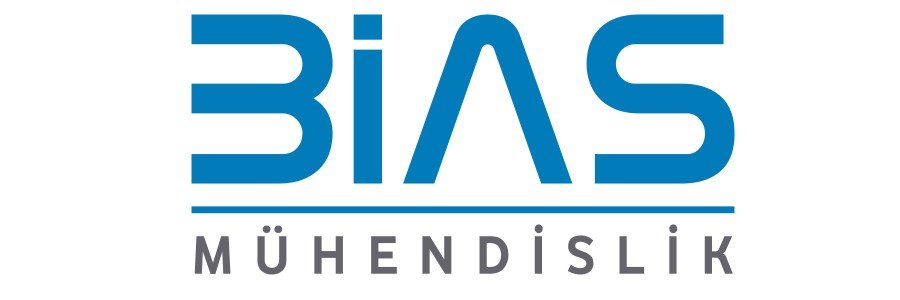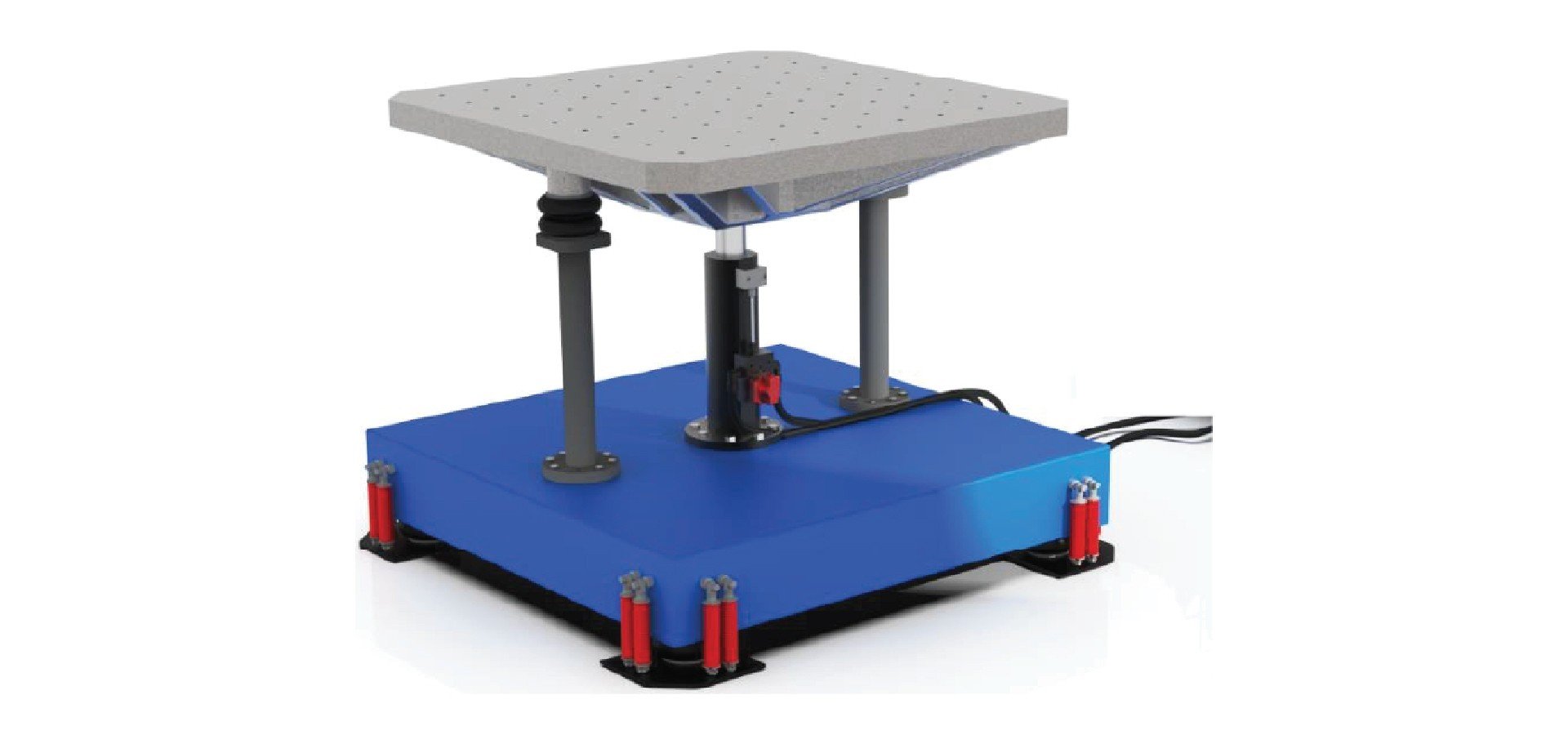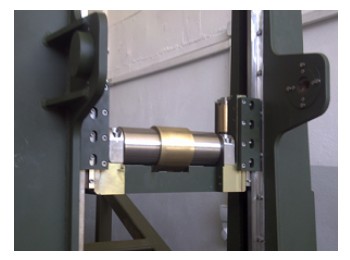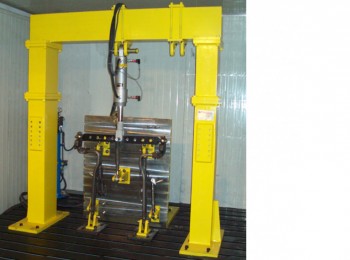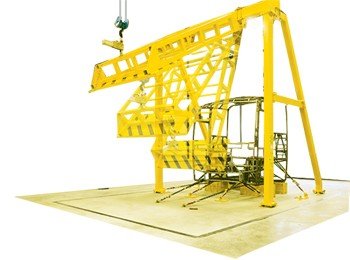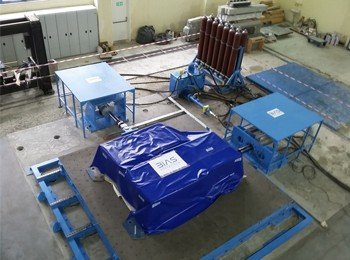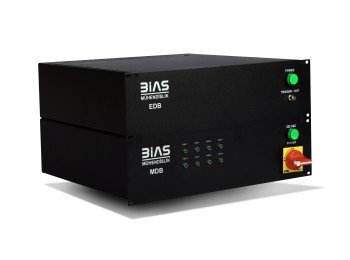BİAS HYDRAULIC SHAKER
- 1.500 x 1.500 mm movable table with high value of first resonance frequency
- Robust mechanical body
- Special hydrostatic actuator for dynamic tests
- Air springs for reducing the vibration and shock absorbers for shock
- High precision MOOG servo valve and batteries for air changing of actuators
- Hydraulic Power Pack, suitable for viibration tests
- Controller (MOOG)
MOOG REPLICATION: Obtains the mathematical model of system. With its advanced iteration algorithms, it enables to reach the result with fevwer iterations. Block cycle tests can be defined. Time and frequency domain analyzes of data can be viewed in a variety of flexible formats.
MOOG SINE SWEEP TEST: It provides the necessary test definition for sine sweep tests with a flexible and user-friendly interface. It performs highly accurate sine sweep tests via using adaptive control methods.
MOOG RANDOM VIBRATION TEST: Developed for life and structural testing. Random vibration identifies PSD profiles, allowing them to be played with high accuracy.
MECHANICAL BODY
It consists of metal material with high corrosion resistance. The first resonant frequency of the mechanical body is designed to be 3-4 times higher than the system working frequency. The body is fixed to the floor with air bellows that can be adjusted to 1-6 bar pressure. In the mechanical body, there is an actuator with a hydrostatic bearing, a servo valve and a piston feeding battery. The table is made of aluminum material and there are M12 holes for fixing testing unit.
HYDRAULIC POWER PACK
The hydraulic power pack has been specifically designed to provide dynamic performance for vibration test systems operating with hydraulic oil pressure and flow. The system reaches the desired dynamic load capacity and displacements at a standard pressure of 210 bar with a variable flow rate depending on the actuator. Regarding the customer needs, the hydraulic flow rate can be increased or decreased. The hydraulic system is managed by PLC automation to prevent unexpected force applications, oil heating, vibrations, and etc.
CONTROLLER
It realizes the acceleration and position control of the servo-hydraulic actuator. The loop cycle rate can be up to 10 kHz. Thus, it is possible to control high frequency movements. Random vibration (random vibration) defines PSD profiles and, by controlling the acceleration, ensures the movement of the table vibration characteristic in accordance with the determined profile. For this, it uses advanced model-based adaptive control algorithms. The software frontend is user-friendly and flexible.
VIBRATION SYSTEM |
| Movement Direction | Vertical |
|
| Number of Actuators | 1 | Qty |
| Maximum Force | 50 | kN |
| Maximum Payload | 1.000 | kg |
| Table Dimensions | 1.500 x 1.500 | mm |
| Table Mass | 300 | kg |
| Frequency Range | 1-200 | Hz |
| Maximum Acceleration | 4 | g |
| Maximum Velocity | 0.8 | m/s |
| Maximum Displacement | 200 | mm |
| Table Material | Aluminum |
|
| Body Dimensions | 1.600 x 1.600 x 1.400 | mm |
| Body Mass | 4.050 | kg |
HYDRAULIC POWER PACK |
| Working Pressure | 1-210 | Bar |
| Flow Rate | 150 | lt/min |
| Service Manifold | 160 | lt/min |
| Power Capacity | 60 | kW |
| * Cooling Unit (Optional) | 40 | kW |
SOFTWARE
The amplitude and phase control adaptive LMS algorithm manipulates the command signal to match the target and response signals for sinusoidal signals. It is a useful software specially prepared for hydraulic vibration test systems. Sinusoidal, Square, Triangle, on-demand and user-defined signals can be easily generated or loaded into the software. There is a calibration module for easy calibration of the sensors and a specially created vibration module for the definition of random vibration data.


